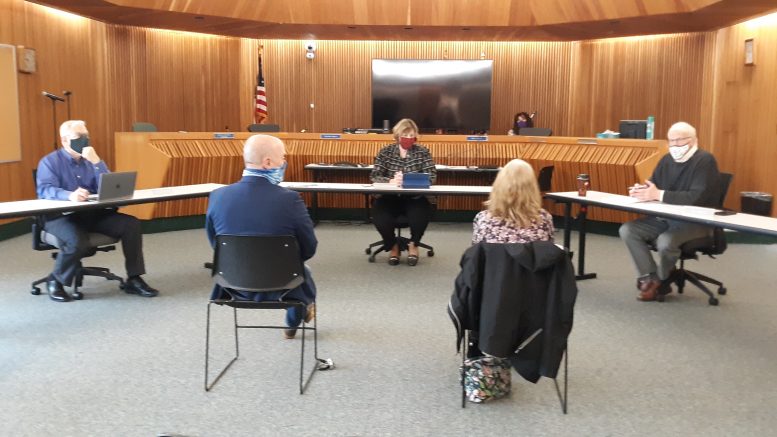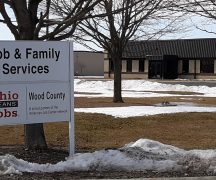By JAN LARSON McLAUGHLIN
BG Independent News
When COVID hit last spring, the demand for food and income assistance started climbing – and for months it didn’t stop.
But money from the federal government has filled the need, according to Dave Wigent, director of Wood County Department of Job and Family Services.
“The federal assistance mitigated what we thought would be a tsunami of requests,” Wigent said.
“The feds turned on the faucets,” he said. “Eventually, they are going to turn them off again.”
Throughout the pandemic, the safety net has done a good job helping Wood County residents facing financial hardships, Wigent told the county commissioners on Thursday.
During the height of the pandemic, the call volume for assistance doubled, Wigent said. The number of people qualifying for SNAP (Supplemental Nutrition Assistance Program), formerly called food stamps, has jumped. And the number of residents receiving Medicaid hit a high of 18,322 in December 2020.
Efforts were made to not remove any residents from assistance during the pandemic, explained Laura Seifert, administrator of the Income Maintenance Unit at Wood County JFS.
“People who went on during the pandemic are staying on till the end of the public health emergency,” which is predicted to be the end of 2021, Seifert said.
“We’re going to discover a significant number of people who should be coming off the program,” Wigent said.
No penalties will be issued for people who qualified for Medicaid at some point during the pandemic, but stayed in the system when they no longer met the standards.
“That’s a free pass” from the federal government, Seifert said.
The caseload is not expected to return to normal for 18 to 24 months after the end of this year.
“It has been a big challenge to manage all of this,” she said.
“The pandemic and COVID have created a lot of change in the programs and client flow,” Wigent said.
But overall, the federal programs such as unemployment benefits and stimulus checks, have helped the safety net hold strong.
“Clients have been doing much better than I thought,” Wigent said.
However, some social service agencies have been hit hard by funding cuts – such as those dealing with domestic violence, victims of violence crimes, and mental health services, he said.
“Some of our agencies are suffering,” Wigent said. “I believe we have some work to do to support the social safety net.”





